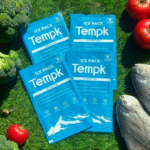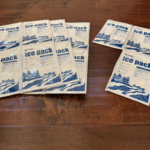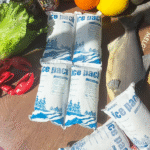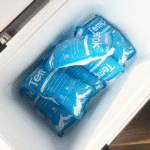If you’re looking to buy dry ice packs for sale, you’re in the right place. Dry ice is one of the most effective ways to keep goods frozen during shipping. Whether you’re shipping food, medical supplies, or other temperature-sensitive items, selecting the right dry ice pack is crucial for maintaining the integrity of your products. In this article, we’ll explore the best options available for purchasing dry ice packs, as well as key considerations for safe shipping and handling.
-
What types of dry ice packs for sale are available for shipping and storage?
-
How do you choose the best dry ice pack for your needs?
-
How much dry ice do you need for safe shipping?
-
What are the best shipping containers for dry ice?
-
How do you handle dry ice safely during transport?
What Are Dry Ice Packs for Sale?
Dry ice packs for sale refer to blocks or pellets of solid CO₂ used for keeping goods frozen during storage or transit. These packs are often sold in bulk, pre-packaged bags, or individual blocks/pellets and are commonly used in vented coolers or insulated containers.
Expanded Explanation:
Dry ice works by sublimating (changing directly from a solid to a gas), which is why it’s perfect for freezing perishables or medical products without creating a mess of water. Unlike regular ice, which melts into water, dry ice leaves no residue, ensuring your products remain dry. However, because CO₂ gas can build up pressure in airtight containers, proper packaging with vents and appropriate labeling (such as UN1845) is essential for safety and compliance.
Why Choose Dry Ice Packs for Sale?
Dry ice packs for sale offer a reliable, efficient, and safe solution for transporting temperature-sensitive products. Unlike traditional ice, dry ice maintains lower temperatures, preventing items from thawing or being damaged during shipping.
Expanded Explanation:
Dry ice can keep goods frozen for up to 72 hours or more, depending on the quantity and insulation used. It’s ideal for shipping perishable food items, pharmaceuticals, vaccines, and laboratory samples. The ability to customize your cooling needs based on the shipping duration, container types, and climate conditions makes dry ice a versatile option for cold chain logistics.
| Feature | Dry Ice | Regular Ice |
|---|---|---|
| Temperature | -78.5°C | 0°C (32°F) |
| Sublimation | Directly turns to gas | Melts into water |
| Efficiency | Long-lasting cold | Requires replenishing |
| Ideal Use | Frozen shipments | Chilled shipments |
How Much Dry Ice Do You Need for Sale?
The amount of dry ice you need depends on the shipment duration, cooler type, and ambient temperature. For shorter shipments (1–3 days), approximately 2–5 kg per 24 hours is typical.
Expanded Explanation:
It’s essential to consider the insulation capacity of your cooler. A well-insulated container reduces the rate at which dry ice sublimates. VIP (Vacuum Insulated Panels) coolers are optimal for longer shipments as they provide superior thermal resistance, requiring less dry ice for the same duration compared to less insulated coolers like EPS (Expanded Polystyrene).
Quick Estimator for Dry Ice Needs
| Cooler Size (L) | Estimated Dry Ice (kg) | Duration (hrs) | Insulation Quality |
|---|---|---|---|
| 20L | 3.0 | 24 | Average (1.0) |
| 40L | 6.0 | 48 | Good (0.9) |
| 60L | 9.0 | 72 | Excellent (0.8) |
Best Containers for Dry Ice Packs for Sale
The best containers for dry ice include vented, insulated coolers. EPS coolers are ideal for short shipments, while VIP or EPP (Expanded Polypropylene) coolers are better for longer durations.
Expanded Explanation:
When selecting a container, always ensure it is vented to allow CO₂ gas to escape and avoid pressure buildup. For shipments requiring longer freezing times, VIP coolers provide the best insulation, though they come at a higher price. EPP crates offer a middle ground between cost and insulation performance, perfect for mid-range shipments.
How to Handle and Ship Dry Ice Packs Safely?
Always handle dry ice with gloves or tongs, never touch it with bare skin, as its extreme cold can cause frostbite. Store dry ice in a well-ventilated area to allow for safe sublimation of CO₂ gas.
Expanded Explanation:
Dry ice is a hazardous material that can displace oxygen in confined spaces, posing suffocation risks. Ensure proper ventilation in storage areas and during shipment. If shipping via air, adhere to regulations regarding weight limits (typically 2.5 kg per package on passenger aircraft) and labeling requirements.
Safety Tips for Handling Dry Ice
-
Ventilation: Store dry ice in an open, ventilated space.
-
Protective Gear: Always wear gloves and goggles.
-
Monitor CO₂ Levels: Use CO₂ sensors for large quantities.
2025 Trends in Dry Ice Shipping and Packaging
Trend Overview:
The cold chain industry is evolving with an increased focus on sustainability and eco-friendly packaging. In 2025, VIP containers are gaining popularity for their efficiency and reduced dry ice consumption.
Latest Trends at a Glance
-
Carrier Updates: FedEx and UPS are enforcing stricter dry ice shipping guidelines.
-
Sustainability: A shift towards VIP containers and reduced carbon footprints.
-
E-commerce Growth: The demand for dry ice is rising with the surge in e-commerce grocery and pharmaceutical shipments.
Frequently Asked Questions
Q1: What types of products require dry ice for shipping?
Frozen foods, pharmaceuticals, biological samples, and chemicals require dry ice to maintain low temperatures during transit.
Q2: How long can dry ice keep items cold?
Dry ice can keep items cold for up to 72 hours, depending on the insulation and the quantity used.
Q3: Is dry ice safe for shipping food?
Yes, dry ice is commonly used for shipping frozen food as long as the food is properly sealed and does not come into direct contact with the dry ice.
Summary & Recommendations
Dry ice packs are essential for maintaining frozen conditions during long-distance shipping. Ensure you select the right type and quantity, use insulated containers, and follow safety regulations. Always handle dry ice with care to avoid injury.
Action Plan:
-
Select the right shipping container based on your transit time.
-
Estimate dry ice needs using the provided calculator.
-
Label packages correctly and follow shipping regulations.
-
Train staff on safe handling procedures.
About Tempk
Tempk is a leader in cold chain solutions, specializing in dry ice packs, gel packs, and insulated containers. Our products ensure the safe and efficient shipping of temperature-sensitive goods across industries like food, pharmaceuticals, and biopharma.
Contact Tempk today for expert guidance and tailored solutions for your cold chain needs.
























